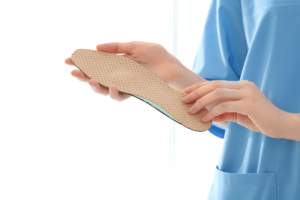What is it?
Tibialis posterior tendinopathy is a condition that is characterised by the degeneration of the tibialis posterior tendon. This tendon travels along the inside of the ankle bone before attaching underneath the arch of the foot.
The tibialis posterior tendon serves as one of the major supporting structures that holds up the inside arch of the foot and helps control the amount that the foot rolls in (pronates).
Due to its crucial role, the tendon is placed under high repetitive loads and in conjunction with certain risk factors, can eventually begin to degenerate or break down.
What are the symptoms?
Symptoms will depend on the severity/grade of posterior tibial tendinopathy.
Common symptoms experienced by patients can include;
- Pain in the arch
- Pain/ swelling behind the inside of the ankle
- Pain/ trigger points felt in the muscle belly of the tendon
- Burning, shooting, tingling pain may also be felt
- Pain and swelling is worse with activity, and usually increases as the day progresses
- Unable to perform a heel raise on the affected side (indicates dysfunction of the tendon)
- Development of a flat foot (arch collapse) on the affected side
Why did I get it?
Tibialis posterior tendinopathy can be caused by many factors, most commonly seen in the active middle aged population.
Most patients with the condition can often present with several of the following risk factors;
- Overuse- sudden increase in activity
- Acute trauma to the tendon
- Poor lower limb/ foot biomechanics
- Incorrect footwear
- Previous injury to tendon
How is it diagnosed?
A thorough clinical examination and history taking will usually be sufficient in diagnosing tibialis posterior tendinopathy/the grade of degeneration. Depending on the severity of symptoms, you may be referred for an Ultrasound and/or MRI to assess the extent of degeneration.
How can I treat it?
Treatment options for posterior tibial tendinopathy is largely depending on the severity of tendinopathy that is present. Because of the progressive nature of the condition, early treatment is essential.
Treatment options may include:
- Rest, ice, compression
- Padding/strapping
- Footwear advice
- Dry needling
- Anti-inflammatories
- Personal strength/ exercise program
- Custom orthotics
- Aircast walker
- Richie brace
- Surgery – when all other conservative measures fail
Need help to resolve your arch pain?
Book your appointment with one of our podiatrists now!






